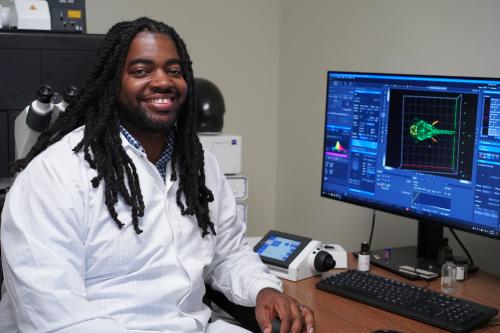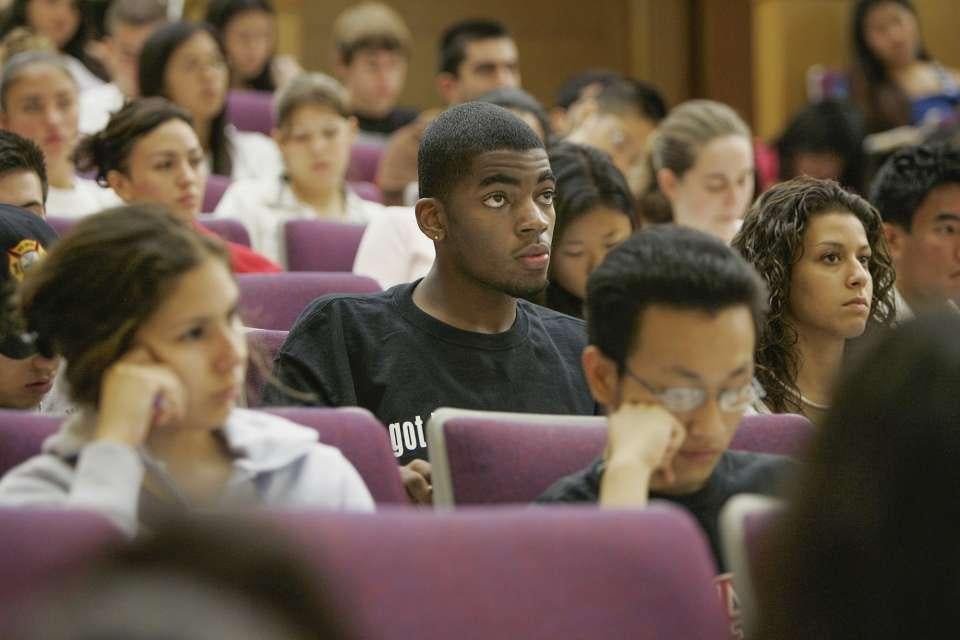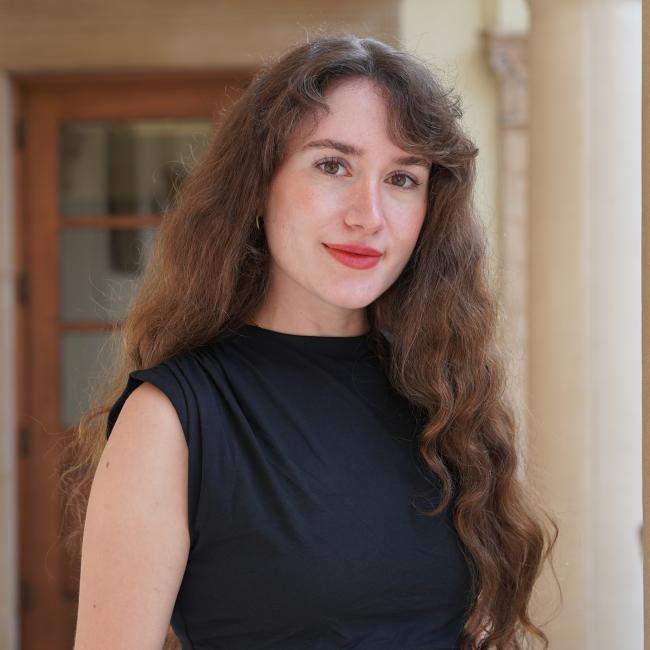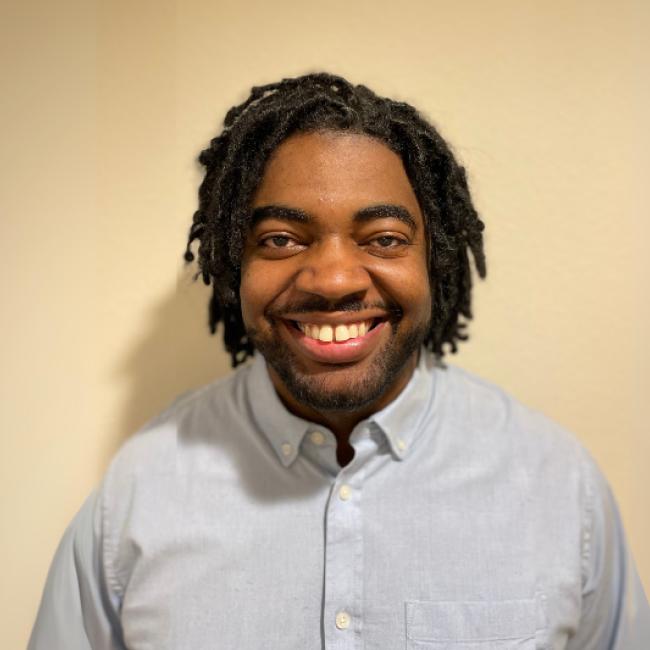
Member Spotlight: D’Juan Farmer studies how the skull forms — and what happens when development goes off course
Dr. D’Juan Farmer is a developmental and molecular biologist trying to understand how cells come together to form something as complex — and essential — as the skull. His lab studies how this developmental process unfolds in the craniofacial skeleton and what happens when it goes awry, causing anomalies like craniosynostosis, a condition in which the bones of the skull fuse too early.
Here, he shares the "how?" and "why?" questions that drive his research, the impact he hopes to make for patients with congenital anomalies and his affinity for fantasy novels.
Farmer is an assistant professor of molecular, cell and developmental biology in the College of Life Sciences at UCLA.
Tell us about your research.
Our lab is interested in how organs are properly formed — how you go from a single cell to a multicellular organism, and how cells communicate to make sure that happens at the right time, in the right place.
We study these processes specifically within the craniofacial skeleton, which is important not only because it protects your eyes and brain, but it’s also where a lot of congenital anomalies occur. One we focus on is craniosynostosis, where the bones of the skull fuse prematurely. That disrupts the normal relationship between brain growth and skull growth, often requiring children with this condition to undergo multiple invasive surgeries.
If we can better understand these mechanisms, we can improve clinical outcomes. One path is better screening to help predict which patients are likely to be affected, so we can intervene as early as possible. Another is using stem or progenitor cell populations to re-establish cranial sutures — the fibrous joints that connect the bony plates of a baby’s skull — after the first surgery to prevent secondary fusions. That’s a major clinical application we’re interested in.
What drew you to the UCLA Broad Stem Cell Research Center?
It’s always great to be around people that are thinking about stem cell biology from so many different perspectives. We focus on in vivo systems, but there are folks here doing organoid work, metabolism, transcriptional regulation — and that creates a really rich environment.
The BSCRC’s core facilities have also been invaluable to the work that we do. We use the microscopy core’s two-photon microscope to locally manipulate and remove cells in the cranial sutures and see what happens when those cells are missing. We also use the flow cytometry core to isolate specific cell populations within the cranial sutures, and the sequencing core to understand what those cells are doing — what kind of messages they’re sending, what genes they’re expressing. And the cores are led by really great people who are invested, accessible and understanding of what we’re trying to do and achieve.

Have you always wanted to be a scientist?
No — I didn’t grow up knowing what a scientist was. I knew what a doctor was, and I came into UCLA pre-med thinking that was the plan. I’m from Compton, and I was part of a program called CityLab, so I had some early exposure to research, but I didn’t see it as a career path. That came later, kind of by chance.
During my freshman year, I got involved in a public health research project through UCLA’s Academic Advancement Program. We were studying how Black men perceive discrimination and how that stress might affect their health — things like allostatic load, or the accumulated strain that long-term stress places on the body. That’s when I realized I wanted to keep asking questions and understand the origins of things. And over the years, I began to transition more into basic science.

Even after graduating, I was still holding onto the idea of an MD/PhD — it’s hard to cleave from that identity because being a doctor carries so much cultural value. But I realized that what I really loved was asking the “how” and the “why.” As a basic scientist, I get to explore those questions more broadly. And when I need clinical perspectives, I can collaborate with geneticists and surgeons. That’s part of the value of this ecosystem.
What motivates you to pursue your research?
I think it's still those same questions — the “how” and “why.” Developmental biology is really cool because it goes right so often, and it takes so many coordinated events for that to happen. I’m always thinking, how is it so robust?
Whether it’s the craniofacial skeleton, muscle or another organ system, I'm ultimately asking how proper structure and function emerge in development. Those questions let me think broadly and follow where the science goes.
Where and when are you the happiest?
In the lab, I’m happiest when things are running smoothly, and the people around me are thriving. These days, I don’t do many experiments myself anymore, so the joy comes from seeing my trainees get that lightbulb moment or start thinking independently and creatively. I’m always excited about those small victories.
Outside of work, I get a lot of happiness from my kids. I have two, and just seeing them experience joy and curiosity — especially for the first time — is amazing. My daughter is six and has a real inclination for art, science and crafting. We try to nurture that as much as we can. Whether she becomes a scientist or not, I love watching her discover new things.

What’s something most people might not know about you?
I’m really into all things fantasy and sci-fi — audiobooks, shows. Red Rising is my favorite series right now; I can’t wait for the next book to come out. I’m also into The Witcher, Wheel of Time, House of the Dragon — you name it. Escapism is my hobby.
And I’m a big tennis fan. I haven’t picked up a racket in years, but still follow the sport closely and keep up with the stats and matches every day.
What’s one thing you wish more people knew about science?
That embracing basic science is so critical to our discovery process. So many of the biggest breakthroughs — the things that change lives — come from work that wasn’t initially aimed at solving a particular disease. They came from asking fundamental questions.
It’s often easier for people to appreciate work that has an immediate application — especially in areas like cancer or dementia. But understanding basic biological mechanisms can lead to completely new ways of thinking about and treating disease.

Do you have a “white whale” — a big dream for your career?
I’d love to build a system where we can predict developmental outcomes based on genotype — where we can say not just what a mutation will do, but when it'll take place during development and how to intervene. I want to understand the relationship between genetics, development and environment in a way that lets us design preventative approaches or appropriate interventions.
And long-term, I’d love to use stem cell populations to actually re-establish cranial sutures and prevent re-fusion after surgery. I think that’s something we’ll see in the future — and it'd make a huge difference for patients.

